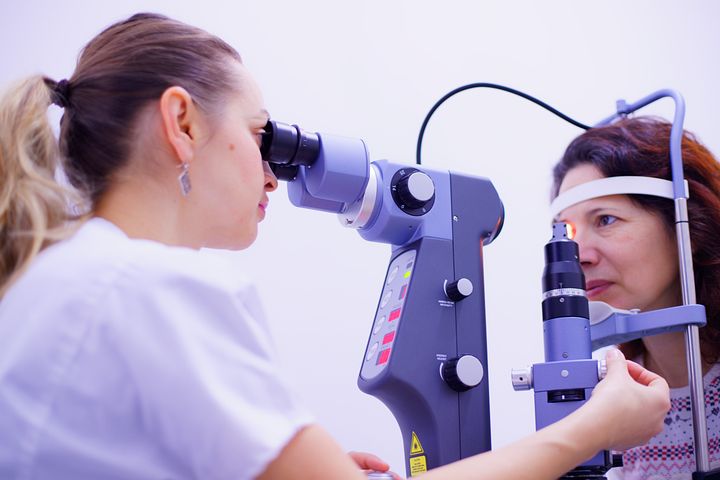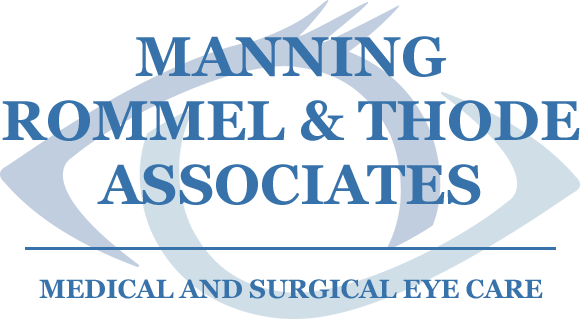While there are hundreds of different eye diseases and disorders, some of the most common include conjunctivitis, cataracts, diabetes-related retinopathy, glaucoma, and age-related macular degeneration.
So, what causes these issues? How do you know if you have one? And if so, how can it be treated? Keep reading to learn more and better understand eye diseases.

Conjunctivitis
Conjunctivitis (otherwise known as pink eye) occurs when the conjunctiva, which covers the white part of the eyeball, is inflamed or irritated.
Symptoms
Conjunctivitis is easily diagnosable after an eye exam, and the most common symptoms include:
- Eye redness
- Swollen, red eyelids
- Teary, itchy, or burning eyes
- Drainage/pus from eyes
- Crusty eyelids
Causes
The most common causes of pink eye include allergies or bacterial or viral infections. It is extremely contagious and can be spread from person to person very easily.
Treatment
Your doctor will most likely provide you with antibiotic drops and suggest applying warm compresses in order to ease discomfort and help clear up the infection. If the infection is severe, oral antibiotics will be prescribed. The infection usually clears up in a few days after treatment has begun.
Cataracts
Cataracts are very common as people get older, and they occur when the eye’s lens becomes clouded.
Symptoms
Early on, there are no symptoms, but over time, patients will most likely experience:
- Blurred, hazy, or double vision
- Sensitivity to light
- Difficulty seeing at night
- Colors looking more faded
- Frequent eyeglasses/contact lenses prescription changes
Causes
Cataracts are mostly caused by natural changes in your eye as time goes on. As you get older, the proteins in your eye have the tendency to start to break down and clump together, thus creating a cloudy lens (i.e., cataracts).
Treatment
The only treatment for cataracts is surgery, in which the cloudy lens is replaced with an artificial lens. The success rate for this treatment is extremely high, with over 90% of patients seeing more clearly after the cataract was removed.
Diabetes-Related Retinopathy
Diabetes-related retinopathy occurs when there’s continuous damage to the blood vessels in the retina because of unmanaged high glucose levels in the blood.
Symptoms
Those with diabetes-related retinopathy don’t notice vision changes until the disease is severe. However, for some, the symptoms come and go periodically.
These symptoms consist of:
- Blurry/distorted vision
- Color blindness or seeing colors as more faded
- Difficulty seeing at night
- Inability to read or see faraway objects
- Small dark spots or streaks that distort vision
Causes
Diabetes-related retinopathy is a result of complications from diabetes.
Treatment
The treatment process for diabetes-related retinopathy includes getting specific medicines injected or surgery that helps to repair or shrink blood vessels in the retina.
Glaucoma
Glaucoma occurs when there is a buildup of fluid in the front of your eye, causing pressure on your eye and ultimately damaging the optic nerve. There are two types: open-angle glaucoma and angle-closure glaucoma. If left untreated, it can lead to permanent vision loss.
Symptoms
Those with open-angle glaucoma often don’t experience symptoms until late in the disease. Angle-closure glaucoma symptoms come on much faster and can consist of:
- Eye pressure or pain
- Consistent headaches
- Blurred or tunnel vision or rainbow-colored halos around lights
- Blind spots
- Red eyes
- Nausea or vomiting
Causes
While the exact cause of glaucoma remains unknown, it mostly deals with a buildup of pressure inside your eye.
Treatment
There is no specific cure for glaucoma. However, the best way to treat it is by lowering the intraocular pressure, which can help slow the progression of the disease. The most common way is through medicated eye drops. However, some doctors may look to laser treatments or surgery in more severe cases.
Age-Related Macular Degeneration
Age-related macular degeneration (AMD) affects your central vision overall and gets worse over time. There are two different types: wet and dry. In dry macular degeneration, the center of the retina essentially deteriorates, while in wet macular degeneration, blood vessels grow both under and into the retina and leak blood and fluid.
Symptoms
AMD symptoms, which usually aren’t noticeable at first and worsen as the disease progresses, include:
- Blurry vision, especially toward your central vision
- Black or dark spots in your field of vision
- Straight lines appearing as wavy or curved
Causes
As its name suggests, AMD occurs when aging damages the macula, which is the part of the eye that controls straight-ahead and centralized vision.
Treatment
There is no cure for AMD as of now, but certain treatments can help slow the disease’s progression. These include laser surgery/therapy, medications such as anti-VEGF agents, and corrective lenses.
If you find yourself experiencing any of these symptoms, it’s best to consult your doctor. However, there’s no need to research “eye surgeon near me” if you’re located in Lancaster, PA. Here at Manning, Rommel & Thode Associates, we understand how important it is to have clear vision.
Whether you need eye physicians or surgeons, we’re here to help. Contact us today to schedule an appointment.
